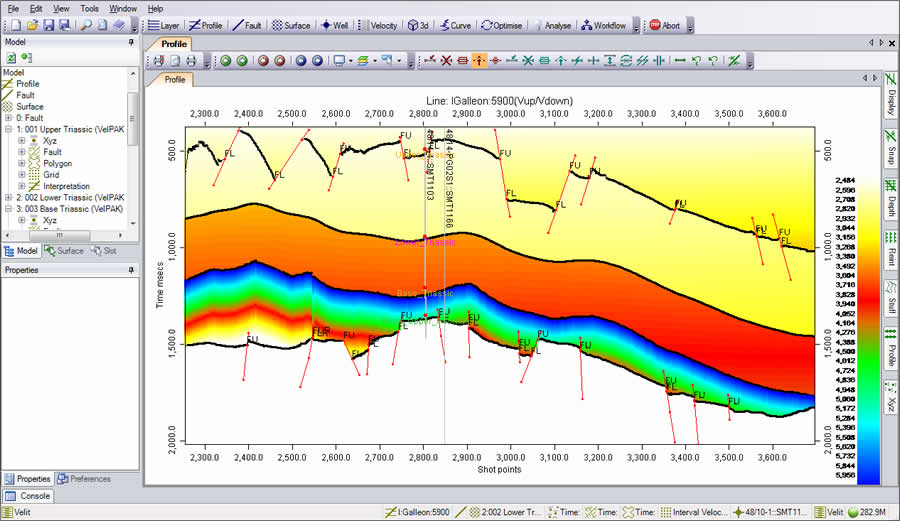Exploring Profound Depths: Grasping the Uncertainties of Depth in Seismic Data

Diving deep into the secrets held beneath the Earth’s surface, seismic data takes the spotlight as a key player in uncovering the composition and potential riches hidden below. While this data provides priceless insights, decoding it comes with its own set of challenges. One significant puzzle to solve is the analysis of depth uncertainty. In this piece, we’ll roll up our sleeves and wade through the intricacies of depth uncertainty in seismic data. We’ll dig into where it comes from, how it shakes things up, and the ongoing hustle to ease its impact on geophysical exploration. So, buckle up for a journey into the depths, as we explore the uncertainties in seismic data through the lens of “Exploring Profound Depths: Grasping the Uncertainties of Depth in Seismic Data.”
Unraveling the Enigma of Depth Uncertainty
Varied Subsurface Realities
Beneath the Earth’s surface lies a dynamic and diverse environment, characterized by heterogeneous geological formations, diverse rock properties, and varying fluid content. These intricacies present a challenge in precisely determining subsurface depths, resulting in depth uncertainties within seismic data.
Factors in Acquisition and Processing
Seismic data, obtained by sending waves into the Earth and recording their reflections, encounters hurdles during acquisition and processing. Irregular topography, fluctuations in subsurface velocity, and the presence of noise are factors that inject uncertainties into the seismic data journey.
Implications of Depth Uncertainty
Navigating Exploration Risks: In industries like oil and gas exploration, accurate depth information is paramount for pinpointing potential reservoirs. Depth uncertainty introduces risks, influencing drilling decisions and potentially impacting the success of exploration endeavors.
Reservoir Characterization: Understanding the depth and structure of subsurface formations is vital for reservoir characterization. Depth uncertainties can sway estimations of reservoir volume, porosity, and permeability—essential factors in evaluating reservoir viability and productivity.
Impact on Infrastructure Planning: Civil engineering projects, such as tunnels and foundations, rely on precise knowledge of subsurface depths for stability and safety. Depth uncertainties can complicate design and pose potential risks to infrastructure development.
Addressing Depth Uncertainty
Advanced Imaging Solutions: Continuous advancements in seismic imaging, including high-resolution 3D seismic surveys and refined processing algorithms, contribute to minimizing depth uncertainties by providing detailed subsurface images.
Integration of Multi-disciplinary Data: Combining seismic data with geological and geophysical information, such as well logs, gravity data, and magnetic data, offers a comprehensive understanding of subsurface structures, reducing reliance on seismic data alone.
Uncertainty Quantification and Modelling: Geoscientists employ quantification and modeling techniques to assess and manage depth uncertainties, providing a more realistic representation of subsurface conditions and improving the reliability of depth estimates.
The Evolving Landscape of Seismic Exploration
As technology advances, the geophysical community remains committed to refining seismic exploration methods and reducing depth uncertainties. Ongoing research and innovation in data acquisition, processing algorithms, and interdisciplinary collaboration stand as key components of this collective effort.
Navigating the Future
Depth uncertainty in seismic data poses a formidable challenge in the quest to explore the Earth’s subsurface. Recognizing its origins, comprehending its impact, and actively seeking ways to mitigate its effects are crucial steps in enhancing the accuracy of seismic interpretations. As the pursuit of subsurface knowledge continues, the ongoing integration of advanced technologies and interdisciplinary approaches promises a future where the depths of the Earth are explored with unprecedented clarity and precision.
FAQs about Depth Uncertainty in Seismic Data
- Why does the Earth’s subsurface exhibit such variability, leading to depth uncertainties in seismic data?
- The Earth’s subsurface is diverse, with varying geological formations, rock properties, and fluid content. This diversity poses challenges in accurately determining subsurface depths.
- How do irregular topography and subsurface velocity variations impact the acquisition of seismic data?
- Irregular topography and subsurface velocity variations can introduce uncertainties during the propagation and recording of seismic waves, affecting the accuracy of depth information.
- What are the specific risks associated with depth uncertainty in oil and gas exploration?
- Inaccurate depth information can lead to suboptimal drilling decisions, introducing risks that may impact the success of oil and gas exploration projects.
- How do depth uncertainties affect the characterization of reservoirs and their productivity?
- Depth uncertainties can influence estimations of reservoir volume, porosity, and permeability, essential parameters for assessing the viability and productivity of reservoirs.
- What role do advanced imaging solutions play in mitigating depth uncertainties in seismic data?
- Continuous advancements, such as high-resolution 3D seismic surveys and refined processing algorithms, contribute to minimizing depth uncertainties by providing detailed and accurate subsurface images.



